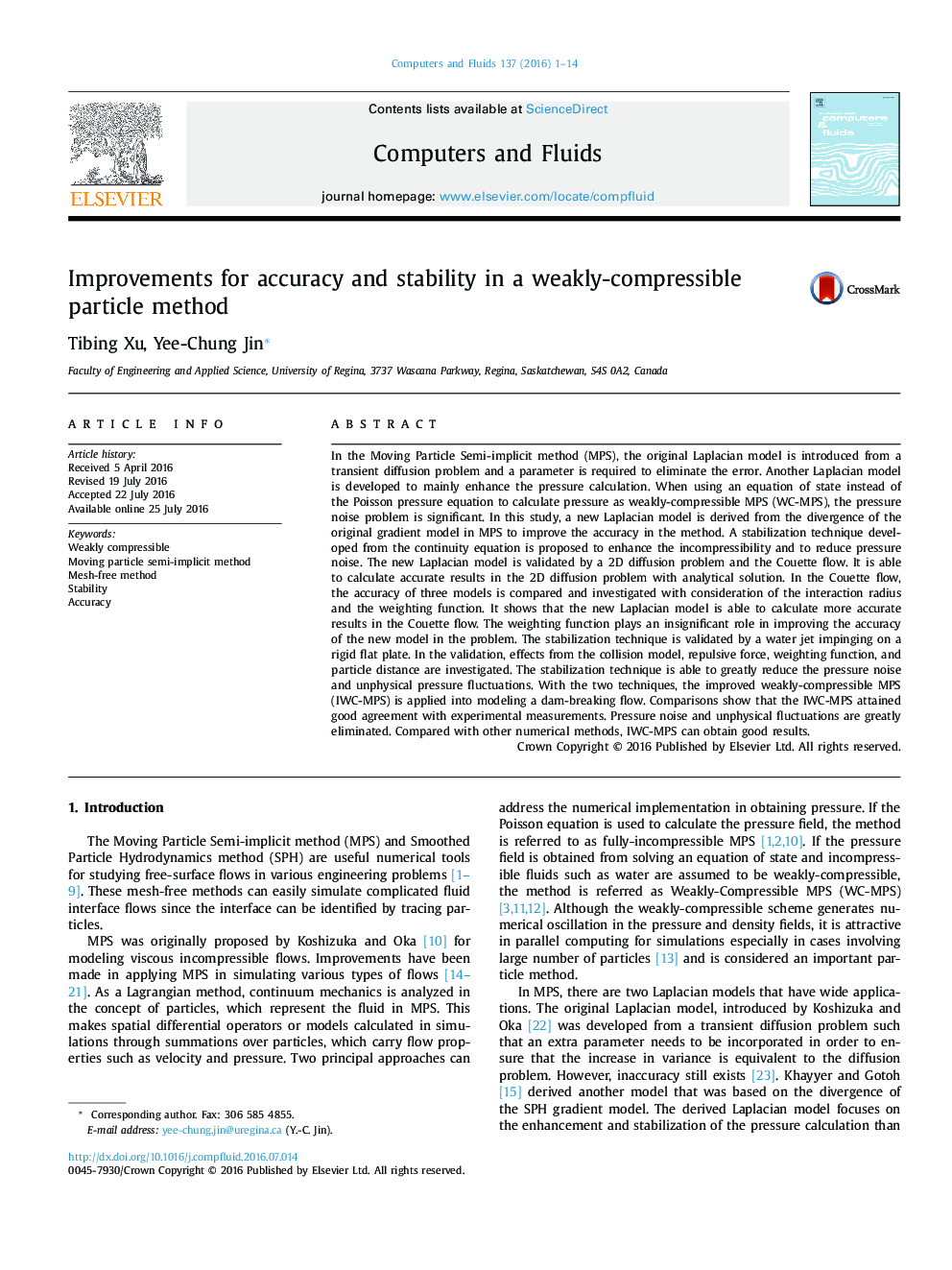| Article ID | Journal | Published Year | Pages | File Type |
|---|---|---|---|---|
| 761227 | Computers & Fluids | 2016 | 14 Pages |
Highlight•An accurate Laplacian model is derived and validated.•A stabilization technique for WC-MPS is developed and evaluated.•Parameters on accuracy in MPS models are investigated.•Better numerical results in benchmark cases have been achieved by using the improved methods.
In the Moving Particle Semi-implicit method (MPS), the original Laplacian model is introduced from a transient diffusion problem and a parameter is required to eliminate the error. Another Laplacian model is developed to mainly enhance the pressure calculation. When using an equation of state instead of the Poisson pressure equation to calculate pressure as weakly-compressible MPS (WC-MPS), the pressure noise problem is significant. In this study, a new Laplacian model is derived from the divergence of the original gradient model in MPS to improve the accuracy in the method. A stabilization technique developed from the continuity equation is proposed to enhance the incompressibility and to reduce pressure noise. The new Laplacian model is validated by a 2D diffusion problem and the Couette flow. It is able to calculate accurate results in the 2D diffusion problem with analytical solution. In the Couette flow, the accuracy of three models is compared and investigated with consideration of the interaction radius and the weighting function. It shows that the new Laplacian model is able to calculate more accurate results in the Couette flow. The weighting function plays an insignificant role in improving the accuracy of the new model in the problem. The stabilization technique is validated by a water jet impinging on a rigid flat plate. In the validation, effects from the collision model, repulsive force, weighting function, and particle distance are investigated. The stabilization technique is able to greatly reduce the pressure noise and unphysical pressure fluctuations. With the two techniques, the improved weakly-compressible MPS (IWC-MPS) is applied into modeling a dam-breaking flow. Comparisons show that the IWC-MPS attained good agreement with experimental measurements. Pressure noise and unphysical fluctuations are greatly eliminated. Compared with other numerical methods, IWC-MPS can obtain good results.
